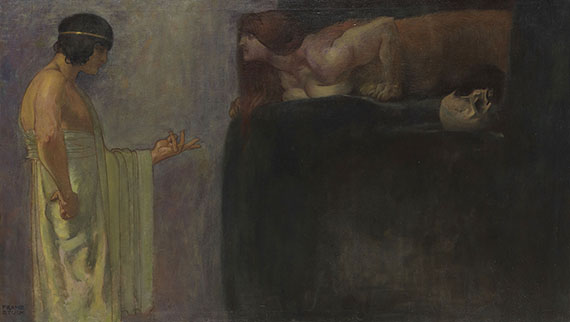Dictionary


Late Baroque and Rococo
The weighty, rich art of the 18th century high baroque period was followed by the lightness and playful elegance of late baroque. It lasted from 1710/20 until the beginning of the classical period (c. 1760/80). Like high baroque, late baroque contained various regional characteristics, tendencies, and styles, the most well known being rococo. This style had its origins in France - primarily in ornament and decoration - and took its name from rocaille (stone garden), the most popular decorative form of the period. Rococo replaced the curvy, powerful, symmetrical ornament of Louis-Quatorze with light, airy, and asymmetrical forms. By 1730, rococo had spread throughout Europe. The term, however, first came into popular usage during the neo-rococo period under the reign of Louis Philippe. The term "rococo" subsequently gained negative connotations, which, however, it soon lost.
The architecture of the period tended to be characterised by broad forms, with an emphasis on interior design. Interiors were decorated with mirrored surfaces, rich ornament and mock-architectonic elements, all placed closely together. Furniture was characterised by curved forms with richly decorated surfaces. Chinoiserie influenced the ornamental language of the period and triggered a blossoming of porcelain art. Pastel hues dominated painting.
Art was characterised by gallant, eroticised scenes (Pastorals and fêtes galantes), and also had its counterparts in poetry and royal culture. The era of late baroque and rococo was the last period of great displays of splendour, not only in art, but also in other areas, as reflected in the extravagant fashion and hairstyles of the era. The key artists of the late baroque and rococo period, included Boucher, Watteau and Chardin from France, Tiepolo from Venice, the English painter Gainsborough, and in Germany, Günther and the Asam brothers.
The weighty, rich art of the 18th century high baroque period was followed by the lightness and playful elegance of late baroque. It lasted from 1710/20 until the beginning of the classical period (c. 1760/80). Like high baroque, late baroque contained various regional characteristics, tendencies, and styles, the most well known being rococo. This style had its origins in France - primarily in ornament and decoration - and took its name from rocaille (stone garden), the most popular decorative form of the period. Rococo replaced the curvy, powerful, symmetrical ornament of Louis-Quatorze with light, airy, and asymmetrical forms. By 1730, rococo had spread throughout Europe. The term, however, first came into popular usage during the neo-rococo period under the reign of Louis Philippe. The term "rococo" subsequently gained negative connotations, which, however, it soon lost.
The architecture of the period tended to be characterised by broad forms, with an emphasis on interior design. Interiors were decorated with mirrored surfaces, rich ornament and mock-architectonic elements, all placed closely together. Furniture was characterised by curved forms with richly decorated surfaces. Chinoiserie influenced the ornamental language of the period and triggered a blossoming of porcelain art. Pastel hues dominated painting.
Art was characterised by gallant, eroticised scenes (Pastorals and fêtes galantes), and also had its counterparts in poetry and royal culture. The era of late baroque and rococo was the last period of great displays of splendour, not only in art, but also in other areas, as reflected in the extravagant fashion and hairstyles of the era. The key artists of the late baroque and rococo period, included Boucher, Watteau and Chardin from France, Tiepolo from Venice, the English painter Gainsborough, and in Germany, Günther and the Asam brothers.
Offers
Headquarters
Joseph-Wild-Str. 18
81829 Munich
Phone: +49 89 55 244-0
Fax: +49 89 55 244-177
info@kettererkunst.de
Louisa von Saucken / Undine Schleifer
Holstenwall 5
20355 Hamburg
Phone: +49 40 37 49 61-0
Fax: +49 40 37 49 61-66
infohamburg@kettererkunst.de
Dr. Simone Wiechers / Nane Schlage
Fasanenstr. 70
10719 Berlin
Phone: +49 30 88 67 53-63
Fax: +49 30 88 67 56-43
infoberlin@kettererkunst.de
Cordula Lichtenberg
Gertrudenstraße 24-28
50667 Cologne
Phone: +49 221 510 908-15
infokoeln@kettererkunst.de
Hessen
Rhineland-Palatinate
Miriam Heß
Phone: +49 62 21 58 80-038
Fax: +49 62 21 58 80-595
infoheidelberg@kettererkunst.de
We will inform you in time.




